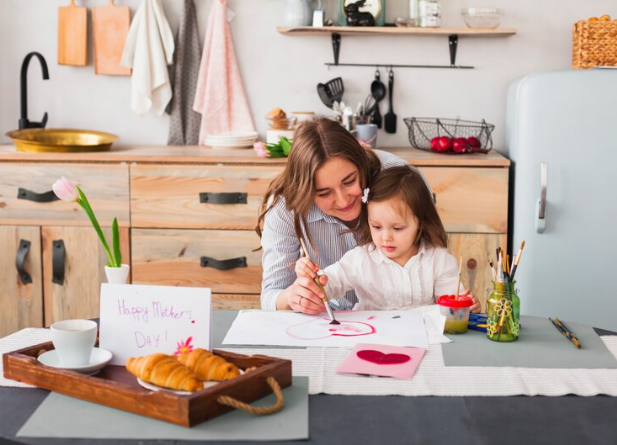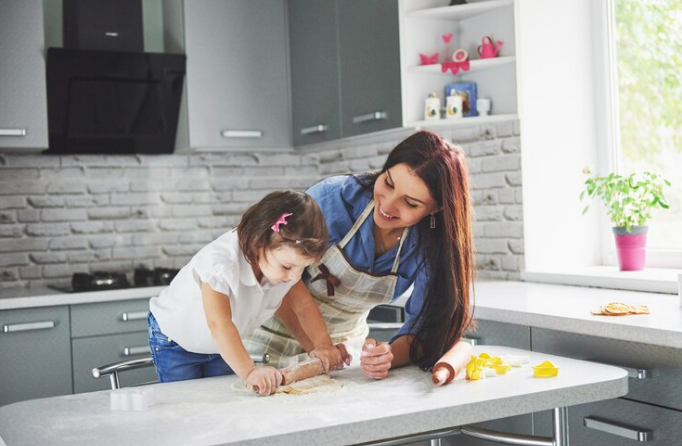Introduction
Although the kitchen is frequently the centre of the house, it can also be dangerous, particularly for little children. Every year, hundreds of youngsters suffer burns and other injuries as a result of stove-related mishaps, which is a serious cause for concern. This article offers thorough methods for childproofing Kitchen so our youngest family members can live in a safer environment.
Despite being a cosy space for family get-togethers, the kitchen presents serious hazards to kids, especially regarding the stove. This book focuses on practical methods for childproofing Kitchen, making the space safer for inquisitive young children who frequently don’t realize the risks in this frequently used family area.
Though the kitchen is a bustling family activity centre, it also contains unspoken risks, especially for naturally curious kids. Stoves can be especially dangerous because of their alluring knobs and dancing flames. This tutorial explores practical methods for childproofing the Kitchen to protect our kids from the numerous risks they provide.

Recognizing the Hazards
Children are at risk from burns, scalds, and gas leaks caused by stoves. Older children may unintentionally turn on the stove while playing, while younger ones may grasp hot surfaces or knobs out of curiosity. The first line of defence against accidents is understanding these dangers.
Scalds and Burns: Burn risks are the most frequent hazard associated with stoves. Due to their delicate skin, children are particularly susceptible to severe burns, even from short-term contact with a hot stove. Burns from stoves can get hot. Due to their thinner skin than adults, young children burn more quickly and severely at lower temperatures.
Gas Leaks and Inhalation: An additional concern associated with gas stoves is the possibility of poisonous or explosive gas leaks. Unknowingly, turning on the gas without lighting could put children at risk. Gas leaks can occur from using gas burners incorrectly. Youngsters could accidentally ignite the gas, posing a risk of explosions or inhaling.
Falling and Tipping Hazards: If a youngster climbs on an open door on a freestanding stove, it may topple over and cause serious injuries. Heavy pots or an uneven stove have the potential to topple over and seriously hurt a youngster. Ensuring the stove is firmly fixed and kids cannot access large cookware is crucial.
Preventive Actions
Physical Barriers: Stove guards can be installed to keep kids away from hot surfaces. Covers for the knobs are also necessary to keep kids from starting the stove. Safety gates can limit access to the kitchen while food is being prepared for increased security. Install stove guards to establish a wall. These guards must be high enough to keep kids from reaching them and constructed of heat-resistant materials. Any kitchen with little children should be required to have stove guards installed. They ought to be strong, resistant to heat, and elevated enough to keep small hands from reaching over.
Strategies for Supervision: Continuous supervision is essential. Children should be taught to remain safe from the stove and always have an adult watch them in the kitchen. Kids should always be supervised in the kitchen. Inform them that when cooking, the area around the stove is a “no-go zone.” In the kitchen, never leave youngsters unsupervised. While cooking, encourage kids to play in a secure location outside the kitchen.
Safe Cooking Tips: Use the back burners and flip the pot handles inside down to lessen the chance of hot food being pulled down. To keep kids from grabbing pot handles, always turn them away from the front of the stove and use back burners if possible. Make sure the area surrounding the stove is safe and kept that way. Instruct all family members to turn pot handles inside out and to utilize backburners.
Selecting the Appropriate Safety Items
The type of stove and childproofing kitchen layout should be considered when choosing safety devices. For instance, knob covers ought to fit firmly and be challenging for kids to take off. Make sure these products are robust, and periodically inspect them for damage.
Knob covers: They should fit over the knobs snugly, be strong, and be resistant to heat. In an emergency, they should be challenging for small hands to remove but simple for adults to access. Choose covers that are secure and properly fit the knobs of your stove. They should be simple for adults to operate, withstand heat, and prevent kids from turning on the stove.
Stove Guards and Gates: Make sure the installation is done correctly, and check them frequently for damage or looseness. Consider which stove guard type is best for your particular kitchen layout. Another option is to install freestanding gates to completely bar kids from the kitchen while food is prepared.

Including Kids in Safety
Teaching kids about stove safety is essential. Explain the risks in basic, uncomplicated language. To reinforce these lessons, set rules such as “no touching the stove” and involve children in safe kitchen activities.
Education Appropriate for Age: Inform kids about the risks associated with using a stove. Make the teachings accessible and easy to grasp and retain by using simple language and visual aids. Adapt your safety instructions to your child’s age. When explaining the stove’s hazards, use interesting techniques like storytelling or interactive games.
Creating Kitchen Rules: Clearly define what is expected of people in the kitchen. For instance, “Do not touch the stove” and “Stay away from the cooking area when the stove is on.” Enforce kitchen safety regulations consistently. Ensure kids are reminded of these guidelines using visual aids like vibrant posters or stickers.
Interactive Learning: To help kids understand safe practices, involve them in safety-related activities such as creating a “safety zone” around the stove or leading supervised cooking sessions. Allow older kids to help with cooking under close supervision. They may learn a lot about kitchen safety from this practical experience.
Innovation and Technology in Childproofing Kitchen
Technological developments provide new approaches to childproofing kitchen. Parents can be notified via smart locks and alarms if a stove is switched on by accident. These developments give conventional safety precautions an additional degree of protection.
Intelligent Safety Equipment: Consider solutions such as alarms that activate when the stovetop goes on or smart locks for oven doors. Smartphones and these gadgets can be paired to receive warnings in real-time. Examine the newest smart kitchen safety devices. Specific gadgets can shut the oven door automatically or notify your phone when the stove is on.
Future Innovations: Watch for cutting-edge technologies such as motion-sensor-equipped stoves that turn off when youngsters approach or automatic shut-off systems. Keep up with the latest developments in kitchen safety. Heat sensors and auto-off functions are innovations that may soon be standard in houses.
Conclusion
Making a childproofing kitchen is essential to setting up a secure home. We can drastically lower the possibility of stove-related mishaps by being aware of the dangers, putting safety precautions in place, teaching kids, and utilizing cutting-edge technology. To ensure our kids are safe and healthy in the kitchen, we must be vigilant and educate them.
One of the most essential steps in making a house safe for kids is to childproof the stove. Parental and caregiver involvement in safety practices, knowledge of the hazards, adoption of preventative measures, selection of appropriate products, and use of technological innovations can all help to dramatically lower the probability of stove-related incidents. The process of stove childproofing Kitchen is a continuous one that changes as your child grows and as technology advances. You may significantly reduce the risks related to stoves by taking preventative measures, educating kids regularly, and using the appropriate safety gear. Recall that the foundation of a secure house is a safe kitchen.
We hope you found this information helpful in your journey to create a safer environment for your family. At GuardWell Safety, we understand that every home is unique, and so are your child-proofing needs. That’s why we offer a free Child-Proofing Consultation tailored to your specific requirements. Let our experts help you identify potential hazards and provide personalized solutions to make your home a secure haven for your little ones. Book your free consultation today and take the first step towards peace of mind.






